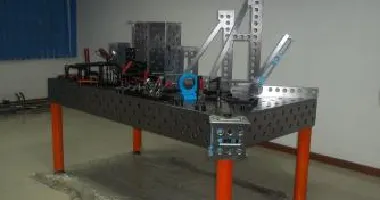دېكابىر . 05, 2024 22:08 Back to list
flanged strainer
Understanding Flanged Strainers Key Components and Applications
In various industrial processes, ensuring the purity of fluids is paramount. Contaminants can lead to significant damage to equipment and decreased efficiency. One effective solution for achieving this is the flanged strainer. This device plays a crucial role in filtering out unwanted particles from liquids and gases, thereby protecting downstream equipment and enhancing overall operational efficiency.
What is a Flanged Strainer?
A flanged strainer is a type of filtration device equipped with flanged ends for easy connection to piping systems. It typically consists of a cylindrical body that houses a straining element or mesh, which captures solid particles as the fluid passes through. These strainers can come in various materials, including stainless steel, carbon steel, and plastic, depending on the application and the nature of the fluid being filtered.
The primary design feature of flanged strainers is their flanged connections at both ends, which facilitate secure installation to pipes or other equipment. This design allows for easy removal and maintenance, making it a preferred choice in many industrial settings.
Types of Flanged Strainers
There are several types of flanged strainers, including
1. Y-Strainers Shaped like the letter Y, these strainers are commonly used to filter liquids and gases. Their compact design allows them to be installed in tight spaces.
2. Basket Strainers These feature a basket-shaped mesh screen that can capture larger volumes of solids. They are typically used in applications where there may be a significant amount of debris.
3. T-Strainers Shaped like the letter T, these strainers are ideal for horizontal installations. They also provide a larger filtering area, making them suitable for applications with higher flow rates.
4. Cone Strainers With a conical design, these strainers are often used for temporary filtration during maintenance or in applications where space is constrained.
Each type of flanged strainer serves specific functions and is chosen based on factors such as fluid type, pressure, and flow rate
.flanged strainer

Applications of Flanged Strainers
Flanged strainers are prevalent in many industries due to their versatility and effectiveness. Some notable applications include
1. Oil and Gas In this industry, maintaining fluid integrity is vital. Flanged strainers are used to filter drilling fluids, pipeline fluids, and lubricants, ensuring that contaminants do not damage pumps and compressors.
2. Water Treatment They are instrumental in municipal water systems and wastewater treatment facilities. By removing large particles from water, flanged strainers help protect downstream equipment and maintain water quality.
3. Food and Beverage In the food processing industry, strainers ensure that contaminants do not enter the production line, preserving product integrity and safety.
4. Pharmaceuticals Flanged strainers are used to filter active ingredients and ensure that the final products are free from impurities, which is critical for compliance with strict regulatory standards.
5. HVAC Systems In heating, ventilation, and air conditioning (HVAC) systems, flanged strainers protect pumps and valves from debris present in cooling water and other fluids.
Maintenance and Best Practices
To ensure the optimal performance of flanged strainers, regular maintenance is essential. This includes routine inspections, cleaning or replacing straining elements, and checking for signs of wear and tear. Implementing a maintenance schedule not only prolongs the lifespan of the strainer but also prevents unexpected failures in fluid systems.
Moreover, it is important to select the appropriate mesh size for the strainer based on the specific application. A mesh that is too fine may lead to increased pressure drop and energy costs, while a mesh that is too coarse may allow unwanted particles to pass through.
Conclusion
Flanged strainers are indispensable in ensuring the cleanliness and integrity of fluids in various industrial contexts. By effectively filtering out contaminants, they protect equipment, enhance efficiency, and contribute to the overall safety of processes across sectors. For businesses aiming to improve their operations, investing in the right type of flanged strainer and adhering to maintenance best practices can yield significant long-term benefits.
-
thread-plug-gauge-our-promise-of-measurement-excellenceNewsAug.22,2025
-
gauge-pin-class-reflecting-quality-legacyNewsAug.22,2025
-
check-valve-types-for-high-rise-buildingsNewsAug.22,2025
-
water-control-valve-for-irrigation-systemsNewsAug.22,2025
-
gate-valve-with-soft-seal-technologyNewsAug.22,2025
-
y-type-strainer-for-oil-and-gas-applicationsNewsAug.22,2025
Related PRODUCTS









